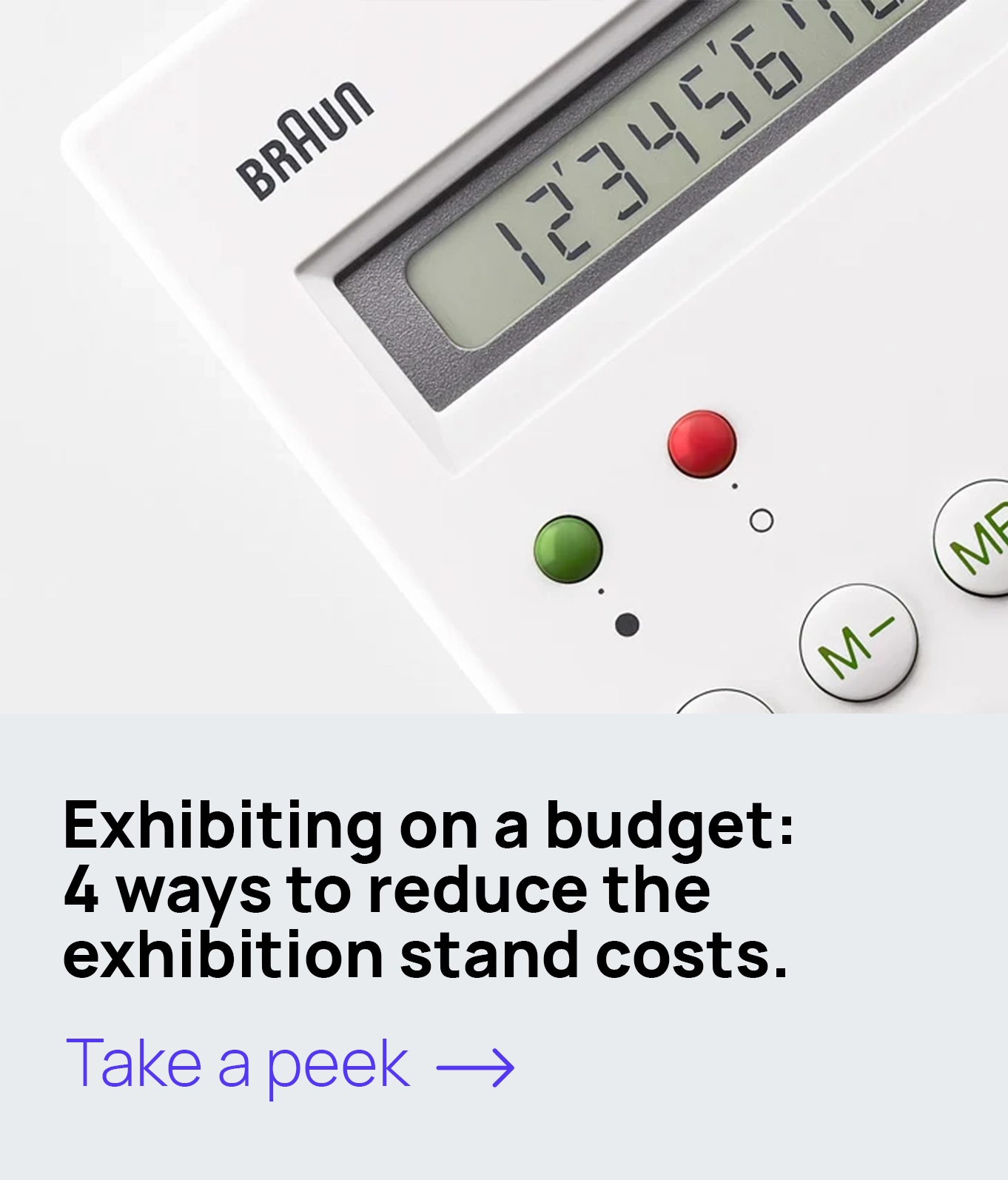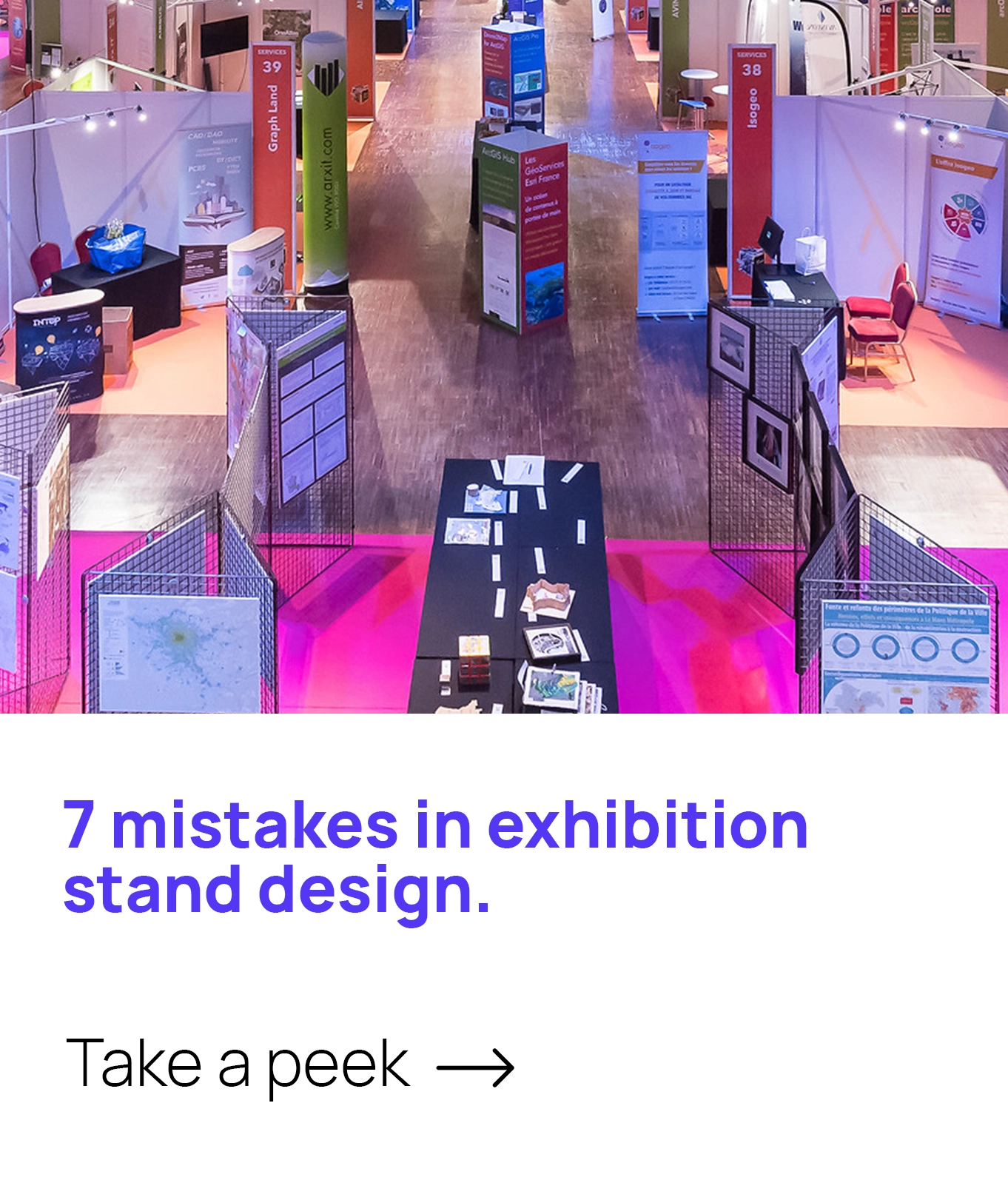“Oh come on, guys, you’re professionals, just draw something”. You hear that a lot if you work in design sphere. The problem is that design is not about the pretty looks, it’s an instrument that should help the business evolve. So, to make a functional booth design one needs certain information to start with. It could be a brief, a questionnaire or a plain e-mail letter – the more questions are covered, the more successful the booth design will be.
The building site
These questions seem to be intuitive. What space do we get to turn into the company avatar? What are the actual sizes of the sides? Most of our clients never forget to provide us with this basic information. Don’t forget to inform us if the stand has got any open sides. A corner booth and an island should be treated differently. The open sides are both a challenge and an opportunity. Sometimes the hanging construction would be appropriate and the designer will add it to the composition without even asking. But it’s always better to inform the booth designer about your vision – should there be anything huge and massive hanging from the ceiling above your stand or not?. Or, suppose, there is an idea to make a double deck booth – this is the right moment to share this insight with the designer. Don’t forget to mention how many square metres of the ground floor and the first floor it is expected to have.
The people traffic
Depending on the location of the booth in the exhibition hall, people traffic will differ. Some aisle is an avenue, while some other is a quiet backstreet. The designer should keep that in mind so that more people will be attracted by the stand and thus the participation will turn out to be more effective. So it is a good idea to give the designer a floor plan of the exhibition hall with the stand marked on it. The stand composition should be balanced to attract more people from the traffic, and providing the “map” will help to do so.
The basic needs
This part of information totally depends on how the company exponents work and what is the exhibition agenda for the company. If there are many meetings planned, then the negotiations zone should be foreseen. It’s up to you whether it should be a hidden VIP-zone with a mini-bar or an open space with ordinary chairs and tables. If the company expects to attract new prospects there’s a need to design an appealing reception zone (actually it’s always a good idea to get an appealing reception zone with a few attractive receptionists – that works great every time). Designers will also appreciate a hint about the furniture that would be acceptable. Rigid chairs do not encourage long discussions while cushioned furniture will suggest engaging in lingering conversations. Another thing to consider in advance is the “bones” zone – a place where the exponents will keep their overcoats, torn boxes, and the stock of POS-materials. It’s up to you to decide how huge this hideaway should be.
The visual part
At the beginning, the future stand design is a canvas and we can put almost anything there. But the difference between the art and the design as we like to repeat is that design is just an instrument for the business. The booth design should be consistent with the brand guidelines of the company. The designers will appreciate getting acquainted with the brandbook, the colors and fonts usage guide, the product website and the social media pages. If the company has some specially developed font faces it would be correct to provide the designer with the respective font files. And we take it for granted that we’ll get the company logo in a scalable file format.
The inspiration
Many clients simply ignore this part, and that’s a shame. The language of visual tastes is rather complicated and it’s not easy to find a common one. It would make our work so much easier if our clients shared their tastes with us. It’s not necessarily about the booth design (however it would be so helpful if you picked a few photos of the stand design you find remarkable!). It could be about architecture – are you enchanted by Sagrada Familia or by the Cucumber tower; or about art – is it Pollock, Warhol, or Chagall. Of course, if the company has already participated in similar events you shouldn’t keep your previous stand design a secret – even if it totally didn’t work out which made you look for a different design studio. You won’t need to provide this information for your next order though, as we’ll keep that in the archive for you 😉






Leave A Comment